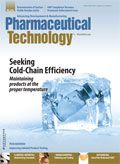The Human Error Behind Human Error
A thorough investigation of all possible causes of deviations should be performed.
Investigating deviations is an important element in cGMP compliance. Well-conducted and documented investigations are crucial to any company's manufacturing operation. There are numerous training classes and seminars intended to demonstrate how to conduct proper and thorough investigations. Even with all that is available, there remains an overuse of "human error" attributed as the root cause. This overuse represents lost opportunities to reduce future issues by identifying the true root cause of a deviation. Herein is the human error in Human Error. The question that needs to be asked during the initial investigation into a deviation is what caused the employee to make the human error? Asking this question early in the investigation leads to better root cause identification and opportunities for continued improvement.

Susan J. Schniepp
How is the use of "human error" reduced as a root cause of issues? There are three key elements required to effectively minimize human error as a root cause behind a deviation: well-written and concise documentation (e.g., SOPs and batch records), effective training on those procedures, and appropriate performance execution of the steps. When these elements are in place and functioning then use of human error, as a root cause, should be few and far in-between. Looking at each of these elements in more detail to ensure they meet their purpose may help companies get to the real root cause of an issue instead of just dismissing an event as human error.
Documentation
Documentation is intended to outline in a concise, understandable manner a recurring set of instructions that, if performed properly and in order, should yield a predictable outcome. These instructions should be written in a clear and succinct manner with enough detail so the operation being described can be successfully executed by trained individuals. All documents associated with an activity need to be synchronized so the information is consistent between documents. For example, SOPs may contain sampling instructions but master batch records indicate when samples should be taken. The instructions between the two documents should not be ambiguous or contradictory. In addition, subjective text such as words like "immediately" should be avoided. Instead of using the word "immediately," the instructions should define the elements needed for the task to be performed appropriately. It is also important to write the instructions for the intended audience. In some cases, the work force may be educated in the English language, although it may not be the primary spoken language. Avoiding coloquial and slang terms will help to ensure all employees understand the instructions.
Training
Once document content is established, employees performing the function described must be properly trained. Thorough training of an employee should be a multiphase approach. Initially, the employee should read all the related documents defining the task and ask any questions they may have of their supervisor. Once the trainee has comprehended the written documentation, they should be partnered with an experienced employee. Many companies stumble at this step in the training department because they often just partner the new employee with the most convenient experienced employee without giving much thought to whether the experienced employee has the capability to properly train another in their area of expertise. Companies should spend time assessing which of their experienced people have the skill set and patience to teach an activity to a trainee. The supervisor should also remain in the loop through this phase of the training to help emphasize the importance of the activity in the manufacturing of the product. The supervisor and the designated trainer must both agree when the trainee is comfortable performing a function without constant supervision. When employees are properly trained and understand the activity they are performing, they are less likely to make a mistake.
Performance and execution
After the control documents are established and the employees are appropriately trained, the employees needs to monitor their own performance to the standard set during the training. The process for monitoring performance should include the use of metrics. The metrics might include tracking how often deviations are written for a particular operation or on a particular employee. The analysis of this data could lead to poor documentation or poor training as a root cause instead of "human error". In addition to metrics, the process should also provide a feedback loop where the employee (old or new) has an opportunity to identify areas of improvement in both the documents and the training. When control documents are revised, it is important to retrain the employees on the change and make sure they modify their behavior to be in line with the new instructions.
Occasionally assigning human error as the cause of a deviation is valid if an employee simply made a mistake. However, other possibilities for the deviation should be exhausted before human error is attributed as the root cause. By using appropriate metrics, having clear and concise instructions, conducting detailed training, establishing performance feedback mechanisms, and using appropriate root cause analysis tools, a more precise root cause can be assigned and continuous process improvement can be achieved.
Susan J. Schniepp is vice-president of quality and regulatory affairs at Allergy Laboratories, Inc. and is a member of the PharmTech Editorial Advisory Board.
